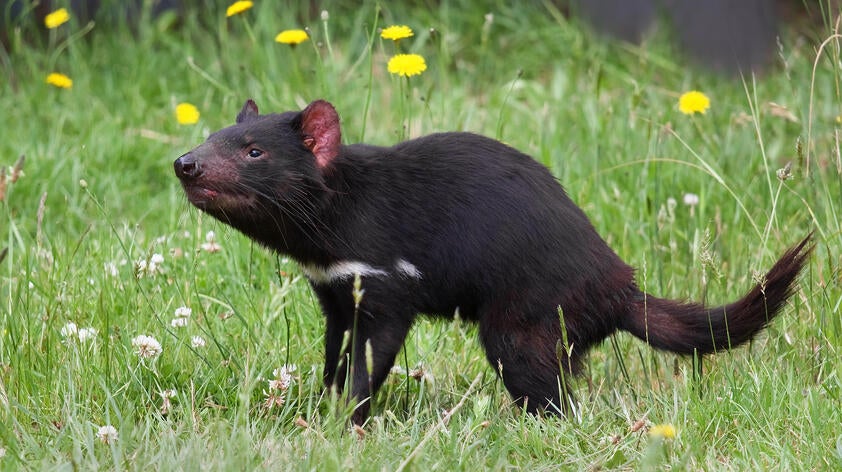
The deal with the devil – synergism between disease and other factors
Infectious diseases often do not drive populations to extinction, rather reduce and isolate wildlife so that they are vulnerable to other factors. This is what we are now learning about the fatal, contagious cancer of Tasmanian devils called Devil Facial Tumor Disease (DFTD).
Ten years ago DFTD was predicted to cause complete extinction of the Tasmanian devil. The disease has decimated the devil population by 80%, but remaining populations seem to be hanging on. The latest infectious disease models suggest that there is hope that the species might survive and adapt to the disease. While this is good news for the devil, it should not create a false sense of security or imply that Tasmanian devils will recover and be okay.
Tasmanian devil numbers are a fraction of what they used to be, currently estimated at 10,000-25,000 devils in the wild, which is a mere 20% of their population size 20 years ago. Now, other factors start becoming increasingly important. Two of these factors are roadkill and wildfires. When these factors interact with an infectious disease that already has substantially reduced population sizes to a fraction of what they once were, then you can get synergistic effects that can push a species to the brink of extinction.
Roadkill is a massive problem in Tasmania, to the point that Tasmania has been dubbed the roadkill capital of the world, with more animals dying per kilometer of road than anywhere else. The main reason for this large death toll is the high density of wild animals and their proximity to humans. Tasmania has many roads that go to remote places and through forests, which can make interaction with wildlife more likely, especially during dusk and dawn. On average, 32 animals die every hour on Tasmanian roads. Roadkill can have a big impact on devil populations that live close to roads. Tasmanian devils are mainly scavengers, and will, therefore, be attracted to roadkill, making it more likely for them to be hit by a car.
Tasmanian devil survival is further jeopardized when factoring in wildfires. We all saw the massive wildfires on the Australian continent that burned large areas from the end of 2019 to the beginning of 2020. With climate change getting worse and global temperatures on the rise, the risk and severity of wildfires are expected to increase. These wildfires can pose a serious risk to the devil population, whose numbers have already been devastated by disease.
Ecosystems are complex, and even though it is simpler to look at disease alone and predict future spread, we should always strive to consider the multitude of factors that can impact a population, and what can be done to conserve the species we have.
San Diego Zoo Global is collaborating with the Save the Tasmanian Devil Program and the University of Saskatchewan’s Computational Epidemiology and Public Health Informatics Lab to develop an Island-scale computer model. This model simulates individual Tasmanian Devils and the landscape they live in, to assess the spread of DFTD. The model also uses additional data such as roadkill locations to assess local threats, such as roads, to better evaluate the threat of disease in the context of other interacting factors that may push Tasmanian devils to the brink of extinction. Taking all these factors into account will help us paint a more complete picture and assess how to best save the Tasmanian Devil.
Lea Lamp is a University of Saskatchewan graduate student, working with Dr. Carmel Witte to construct a computer model to inform Tasmanian devil recovery in the face of DFTD – the contagious cancer that is driving populations to extinction.













